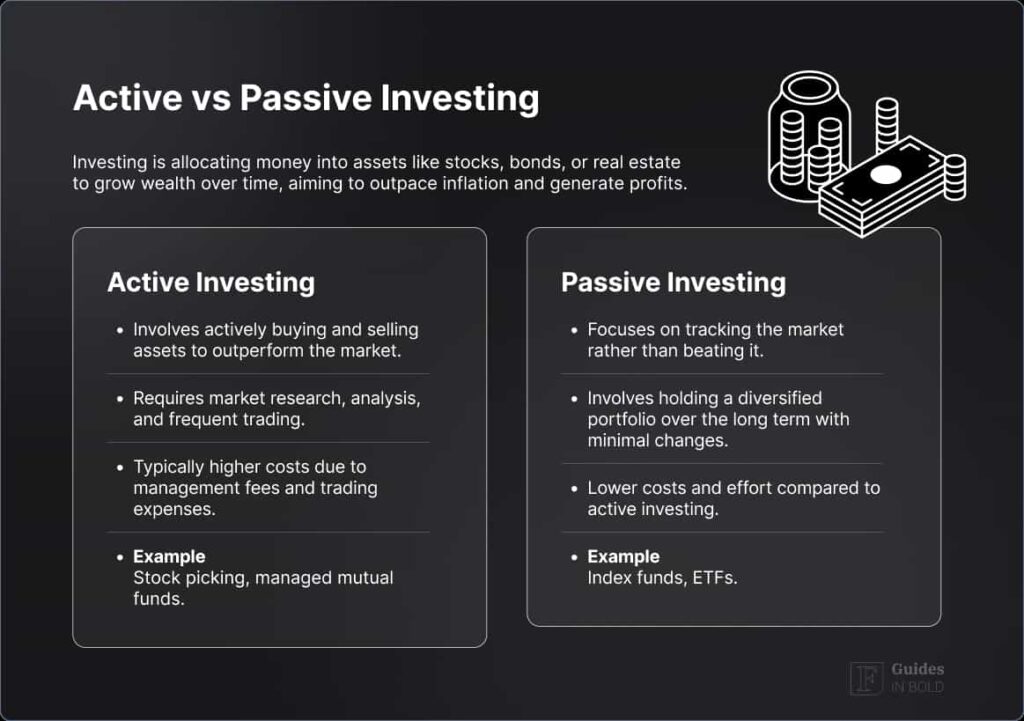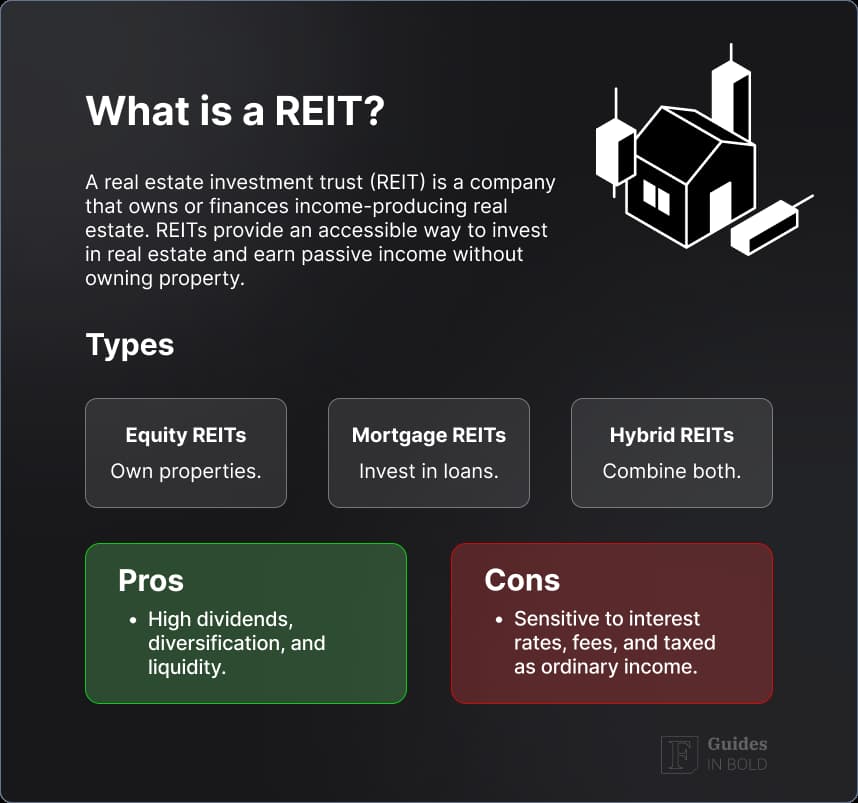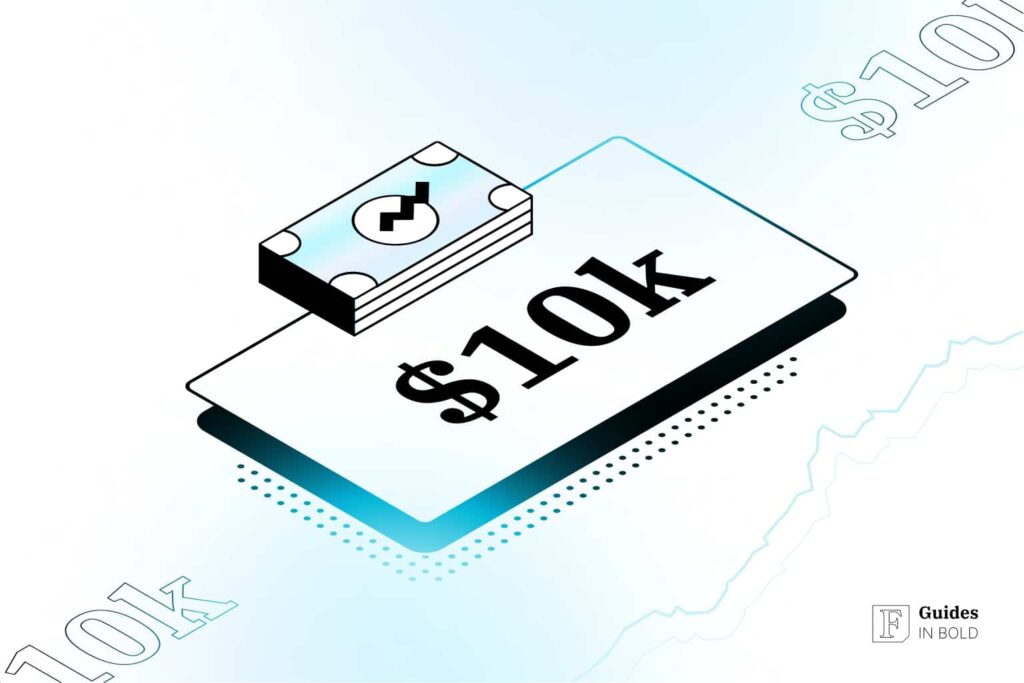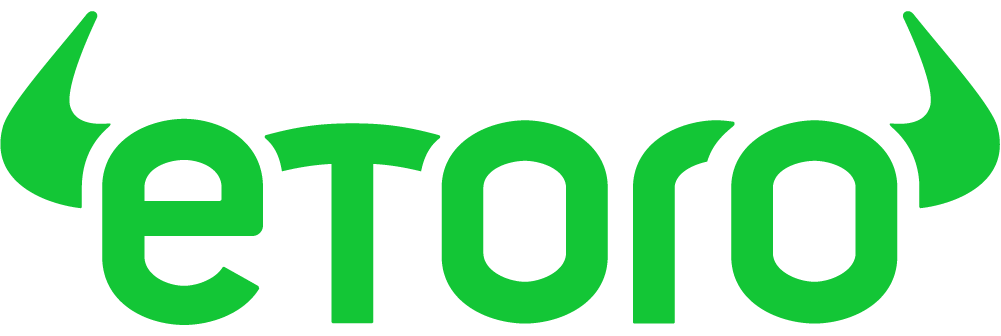Saving $10k is an impressive accomplishment. However, to meet your desired financial goals, you must know how to make your money work for you.
In this guide, you will find ideas for how to invest $10k, the pros and cons of those methods, what to consider before you start investing, as well as more conservative strategies for saving for retirement.
Highly Rated Stock Trading & Investing Platform
-
Invest in stocks, ETFs, options and crypto
-
Copy top-performing crypto-traders in real time, automatically.
-
0% commission on buying stocks - buy in bulk or just a fraction from as little as $10. Other fees apply. For more information, visit etoro.com/trading/fees.
-
eToro USA is registered with FINRA for securities trading.
What kind of investor are you?
Before you decide how to invest $10k, ask yourself these questions:
- What is my investing goal? Is it to save for an upcoming expense, such as a car or a down payment for a house, or are you saving for retirement? This is important because a short-term goal will require a different approach to a long-term goal;
- What is my risk tolerance? Investing is inherently risky, and your risk tolerance will determine your asset allocation;
- How much do I want to be involved? Decide which investing approach suits you best: active or passive investing. If you focus on the long term and aren’t just looking for short-term gains, both techniques can be lucrative. However, we recommend beginners focus on passive investing strategies rather than trying to beat the market. Additionally, if you’re just starting out, financial advisory services might come in really handy.

Ultimately, your age, risk tolerance, investment time horizon, and financial goals all factor into your investment style. And understanding who you are as an investor can help you adjust your method as you age and your financial goals change. You could also take a quiz to find out what kind of investor you are.
Before we proceed further
Best ways to invest $10k
Congratulations, you’ve reached a major savings milestone: you have saved up your first $10k. Your next step is figuring out how to invest that $10k and put this hard-earned cash to work. And while this might not seem like a life-changing sum of money, if invested appropriately over time, it could grow into a sizable nest egg.
So, where to invest $10k? Various options are available to you. But ultimately, the best way to invest $10k is to choose the financial vehicle (or combination of them) that meets your specific needs to help you achieve your future financial goals.
Below you will find our pick for the four best ways to invest $10k:
- Stock market;
- Index funds and ETFs;
- Real estate—REITs;
- Retirement savings.
Now, let’s look into more detail.
1. Stock market
In this section: How to invest $10k in the stock market?
Investment type: Long-term growth
Risk Level: Varies
Broker to consider: Regulated, secure platform eToro.
Highly Rated Stock Trading & Investing Platform
-
Invest in stocks, ETFs, options and crypto
-
Copy top-performing crypto-traders in real time, automatically.
-
0% commission on buying stocks - buy in bulk or just a fraction from as little as $10. Other fees apply. For more information, visit etoro.com/trading/fees.
-
eToro USA is registered with FINRA for securities trading.
Disciplined investing in the stock market over decades is generally the best way to build long-term wealth. And though returns can fluctuate from year to year, if investors reinvest their profits, they may even see compounding gains, which only grow more handsome as time passes.
For example, the S&P 500 brought a 26.89% return in 2021 amid the post-pandemic recovery. And even though the benchmark was down a whopping -19.44% in 2022, it’s still averaging 10.21% since its inception in 1957.
So, once you know what industry, sector, or company you want to invest in, you can shop for an investing platform. For the hands-on types, this typically means a brokerage account, such as eToro or Interactive Brokers. However, for those who require more assistance, opening an account through a robo-advisor is a suitable option. Alternatively, hiring a financial planner or investment advisor for stock recommendations might be a wise choice, particularly when a lot of capital is at stake.

Note
Pros and cons of investing in the stock market

Pros
- High returns: Investing in the stock market can potentially generate higher returns than more conservative asset classes such as bonds;
- Liquidity: Stocks are highly liquid, meaning you can easily buy and sell them at any time;
- Low barrier of entry: Most retail brokers offer commission-free trading and no account minimums, so you can start investing with as little as $10;
- Build long-term wealth: Generally, stocks yield a generous annualized return over the long term. For example, back in March of last year, the 10-year annualized return for the S&P 500 was 12.9%. So at the minimum, you’ll be able to stay ahead of inflation.

Cons
- Returns are not guaranteed: While stocks can outperform many financial assets over long periods, they may not do well over your chosen investing period;
- No short-term gains: Generating profits through stocks generally takes decades, not weeks or months;
- Volatility: Share prices rise and fall minute to minute, taking the investor on an emotional rollercoaster. The best is, therefore, to check your investment periodically;
- Time: When buying individual stocks, you must manage your portfolio yourself. That means regularly following various company health indicators as well as overall market conditions and adapting the asset allocation in your portfolio as necessary. Unfortunately, doing all of that can take a lot of work.
Dividend Investing
2. Index funds and ETFs
In this section: How to invest $10k in index funds and ETFs?
Investment type: Long-term growth
Risk Level: Varies
Broker to consider: Regulated, industry-leading low-cost trading platform Interactive Brokers.
Best Platform for Worldwide Stock Trading & Investing
-
Highly trusted multi-asset broker with clients in over 200 countries
-
Trade on 150 markets globally from a single platform (stocks, ETFs, futures, currencies, crypto & more)
-
Low commissions starting at $0 with no platform fees or account minimums
-
Easily fund your account and trade assets in 26 currencies
-
IBKR pays up to 4.58% interest on cash balances of $10k or more
Passive investing is a long-term investment strategy for building wealth in which investors buy and hold a diversified portfolio of assets with minimal active trading in the market.
Index investing is the most common form of passive investing. In this buy-and-hold strategy, investors purchase exchange-traded funds (ETFs) or mutual funds that track major market benchmarks and hold them over a long time horizon. The objective is to reproduce the financial index performance overall, to match, not beat, the market.
The three most broadly tracked indexes in the United States are:
- The S&P 500;
- Dow Jones Industrial Average;
- Nasdaq Composite.

Pros and cons of investing in index funds and ETFs

Pros
- Low costs: The lack of frequent trading means transaction costs (commissions, etc.) are low with a passive strategy. In addition, while management fees charged by funds are unavoidable, most ETFs fees range from as little as 0.05% to about 1%;
- Less risk: Indexing, by its very nature, offers greater diversification, minimizing portfolio risk;
- Tax efficiency: The buy-and-hold method doesn’t generally result in a massive capital gains tax for the year;
- Convenience: Owning an index is far less complicated to manage than a portfolio of individual stocks that require constant research, news tracking, and adjustment;
- Simplicity: Taking a hands-off investment approach can eliminate many biases and uncertainties that can arise when you pick stocks individually.

Cons
- Volatility: Index funds follow their benchmark index regardless of the state of the markets, meaning if the market conditions are poor, the index funds will also follow the indexes downward. In this case, a good active manager may be able to limit the downside by hedging the portfolio or moving positions to cash;
- Slow gains: Buying and holding can be a winning tactic in the long haul, but evening out the risks also flatten out the rewards;
- Many index funds are formed on a market capitalization basis: For example, the S&P 500 gives higher weights to large-cap companies. So, if, say, behemoths such as Amazon.com Inc. (NASDAQ: AMZN) and Meta Platforms Inc. (NASDAQ: META) experienced a weak quarter, it would have a significant impact on the entire index.
Note
3. Real Estate (REITs)
In this section: How to invest $10k in real estate through REITs?
Investment type: Long-term growth and diversification
Risk Level: Medium
Broker to consider Regulated multi-asset investing platform eToro
Best Crypto Exchange for Intermediate Traders and Investors
-
Invest in cryptocurrencies and 3,000+ other assets including stocks and precious metals.
-
0% commission on stocks - buy in bulk or just a fraction from as little as $10. Other fees apply. For more information, visit etoro.com/trading/fees.
-
Copy top-performing traders in real time, automatically.
-
eToro USA is registered with FINRA for securities trading.
In addition to the stock market, you might also want to invest in real estate. Though $10k might not be enough for a down payment for an investment property, you can still get exposure to real estate by investing in REITs.

What are REITs?

Pros and cons of investing in REITs

Pros
- Provides value appreciation and rental income without the hassle of actually buying, managing, and selling properties;
- REITs offer some of the highest dividend yields on the market;
- Returns over the past 20 years have outperformed the S&P 500, as well as the rate of inflation;
- REITs are publicly traded like stocks, making them highly liquid assets (unlike physical real estate investments);
- Offers a ready-diversified real estate portfolio for any budget without requiring much time or expertise.

Cons
- Dividends are taxed as regular income;
- Hypersensitive to interest rates.
- Some REITs might have high management and transaction fees;
- Because 90% of a REITs taxable income is paid out as dividends, only 10% is reinvested into the REIT to buy new holdings, resulting in slow growth.
4. Retirement savings
In this section: How to invest $10k for retirement?
Investment type: Long-term growth and retirement
Risk Level: Low
Bolstering your retirement savings is an excellent use of $10,000. Indeed, a retirement account can slowly build your nest egg and support your long-term financial needs.
Here are some options for parking your money safely for decent (albeit modest compared to riskier instruments such as stocks) returns in retirement when deciding how to invest $10k:
Individual retirement accounts (IRAs)
An IRA is your go-to choice if you don’t have a retirement account with your employer. It’s also a great alternative if you want different investment offerings than those offered by your workplace retirement plan. When you open an IRA, you can invest in various asset classes, including stocks, bonds, ETFs, and mutual funds.
There are two types of IRAs. A traditional IRA, which gives you an upfront tax deduction, and a Roth IRA, which provides tax-free retirement withdrawals. In 2024, you can contribute $7,000 (or $1,000 more for those over age 50) per year into an IRA, leaving you with an additional $1,500 to $2,500 to invest elsewhere.

Pros and cons of IRAs

Pros
- Tax-free growth on your assets;
- Tax deductions, whether upfront or on withdrawal;
- More investment choices as opposed to workplace retirement plans.

Cons
- Contribution limits;
- Penalties for early withdrawal.
Certificate of deposit (CD) laddering
A certificate of deposit is an FDIC-insured savings account that holds a fixed sum of money for a set period in exchange for interest, with longer periods generally having higher rates.
A CD ladder is a strategy that takes advantage of the various interest rates offered for different time periods and is created by allocating the same amount of money across CDs with varying maturity dates. Buying multiple CDs at different maturities can be a good choice for risk-averse investors who want to take advantage of the long-term CDs’ higher interest rates while maintaining the flexibility of short-term CDs.
Pros and cons of CD laddering

Pros
- Highly safe as money held in a CD is insured;
- Predictable and practically guaranteed returns;
- The flexibility of short-term CDs and the benefit of higher interest rates offered by longer-term CDs;
- Laddering helps to leverage changing interest rates and create liquidity.

Cons
- Penalties for early withdrawals;
- Rates may not be high enough to outpace inflation;
- You could get stuck with lower rates when you redeposit your shorter-term CDs, making less interest than if you had kept all your money in a long-term CD with a higher rate.
Retirement annuities
An annuity is a financial product offered through insurance companies that provide a fixed stream of payments to an individual, typically in the form of monthly income in retirement. Because invested funds are illiquid as well as subject to withdrawal penalties, they are not recommended for younger individuals or those with liquidity needs.
Pros and cons of annuities

Pros
- Provides income for life;
- Can be customized for your specific requirements;
- You only pay taxes once you withdraw the funds.

Cons
- High maintenance costs and commission fees;
- Hefty surrender fees for early withdrawals;
- Any net returns you receive are taxed as ordinary income, which, depending on your tax bracket, could be a lot higher than the capital gains tax rate.
Note
Treasury bonds
Treasury bonds (T-bonds) are debt instruments in which investors lend the US government the purchase amount of the bond in exchange for an interest rate during the bond’s life as well as the face value of the bond at maturity. All treasury securities have zero default risk since they are guaranteed by the full faith and credit of the United States government. Remember, treasury yields can fluctuate depending on the market and economic conditions.
Pros and cons of treasury bonds

Pros
- Stable income stream;
- No risk of losing your principal (original investment) since treasuries have a government guarantee;
- Can be sold before their maturity in the secondary market;
- They can be purchased individually or through mutual funds or ETFs.

Cons
- Returns may not be enough to beat inflation;
- In a rising interest rate environment, fixed-rate bonds will underperform compared to newly issued bonds;
- Selling before maturity can result in a loss.
Take advantage of 401k plans
How to safely invest $10k: Things to consider
Though you may be eager to begin investing your $10k, it’s crucial to assess your financial standing as a whole and ensure the following factors are satisfied first:
- High-interest debt is paid off: Ensure you have repaid any high-interest debt before investing. That includes credit card debt and debt from other loans, such as payday loans. For instance, the average credit card interest rate in 2022 was 19.42%, significantly higher than the average annual stock market return. Low-interest debts such as mortgages or auto loans, on the other hand, do not need to be repaid before you start investing;
- You have an emergency fund: Establish an emergency fund in case of unexpected expenses, such as medical bills, car repairs, or job loss, before you start investing. A good rule of thumb for most people is to put aside six months of living expenses in a deposit account where there’s no risk of losing principal, like a savings or money market account;
- Space out your investments: Instead of investing all of your money once, try utilizing a dollar-cost averaging (DCA) strategy, in which the total amount to be invested is divided into periodic purchases of a target asset over a period of time;
- Don’t put all your eggs in one basket: To spread your risk and protect yourself from large losses, allocate investments across various financial instruments, industries, and other categories. In addition, a diversified asset allocation is essential because it has a massive impact on whether you will meet your financial goal. For example, if you don’t add adequate risk to your portfolio, your investments may not earn a significant enough return to meet your goal;
- Stay wary of fraud: Scams are getting increasingly sophisticated. Fraudsters are often particularly articulate and charming as well as financially knowledgeable, with credible websites, testimonials, and documents that are difficult to distinguish from the real deal. But as always, if it sounds too good to be true, it probably is. That’s why researching and understanding an investment is important before giving someone your money. Start by looking for the company’s financial statements on the Securities and Exchange Commission’s (SEC’s) EDGAR filing system. Check out the Financial Conduct Authority (FCA) list of warning signs here, as well as the SEC’s list of questions to ask about your investments here.
Note
Highly Rated Stock Trading & Investing Platform
-
Invest in stocks, ETFs, options and crypto
-
Copy top-performing crypto-traders in real time, automatically.
-
0% commission on buying stocks - buy in bulk or just a fraction from as little as $10. Other fees apply. For more information, visit etoro.com/trading/fees.
-
eToro USA is registered with FINRA for securities trading.
Conclusion
Before you invest, take care of the basics, such as paying off debt, setting up or continuing to fund a retirement plan, and building an emergency fund.
Then, as you decide how to invest your $10k, have a specific set of goals in place. As your circumstances change, however, revise your investment strategy but stay committed to building wealth for the long term.
Ultimately, investing is a long game, and no matter which financial instruments you use to build your nest egg, your investment performance will see both gains and losses over the years. But remain patient and focused on the future, and it won’t be long until you find yourself researching how to invest $100k.
Disclaimer: The content on this site should not be considered investment advice. Investing is speculative. When investing, your capital is at risk.
FAQs about how to invest $10k
How to invest $10k?
Your best option for investing $10k is to spread it across many financial instruments, including stocks, index funds, and REITs, as well as more conservative options such as bonds or CDs.
Where to invest $10k?
Where you invest your $10k will depend on your age, risk tolerance, investment time horizon, and financial goals. However, a well-diversified portfolio will combine several asset classes, which carry various levels of risk.
How to invest $10k for passive income?
There are various options for investing $10k for passive income. These include index fund investing, dividend investing, crypto staking, P2P investing, and investing in REITs.
How to invest $10k in real estate?
The best way to invest $10k in real estate is to invest in REITs, which offer ready-diversified real estate portfolios, high dividend yields, and high levels of liquidity (particularly compared to physical real estate investments).
How to invest $10k in stocks?
The best way to invest $10k in stocks is to invest in ETFs or mutual funds, which offer diversified, low-cost, and low-effort exposure to the stock market.
Should I pay off debt or invest my $10k?
When deciding between paying off debt or investing $10k, it’s generally advisable to prioritize paying off high-interest debts first, as this can often provide a more immediate and guaranteed financial benefit. Reducing debt can free up more of your future income for investing and other financial goals.
Highly Rated Stock Trading & Investing Platform
-
Invest in stocks, ETFs, options and crypto
-
Copy top-performing crypto-traders in real time, automatically.
-
0% commission on buying stocks - buy in bulk or just a fraction from as little as $10. Other fees apply. For more information, visit etoro.com/trading/fees.
-
eToro USA is registered with FINRA for securities trading.





